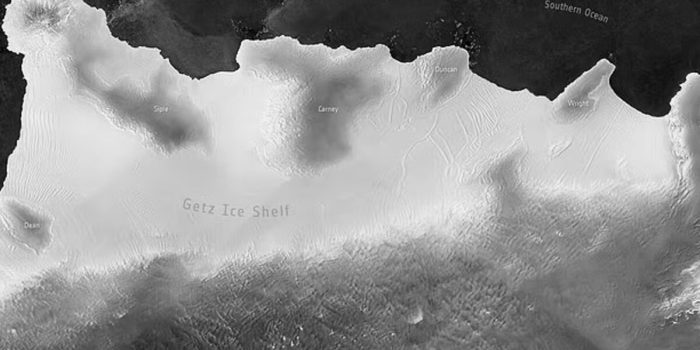Antarctica is undergoing significant changes, with a stunning loss of 7.5 trillion tonnes of water into the ocean over the past 25 years, as revealed by a University of Leeds study. This massive loss of ice sheets is deeply troubling. The research shows that about 40% of Antarctica’s ice sheets have dwindled between 1997 and 2021, with a third losing over 30% of their original mass. This trend raises serious concerns about potential impacts.
A major worry is the potential disruption of ocean currents, which could contribute to rising sea levels. This release of freshwater from Antarctica has the potential to destabilize essential ocean circulation patterns and poses a significant threat to global climate systems, especially with human-induced climate change accelerating ice melt.

The study highlights the varying behavior of ice sheets on the east and west coasts of Antarctica. While most ice sheets on the East Coast have been shrinking, many on the West Coast have remained stable or even grown. This phenomenon can be attributed to differing ocean currents. Warmer waters on the west side lead to ice shelf erosion from beneath, while a band of colder water along the eastern coast offers protection.

The overall balance of Antarctica’s ice shelves indicates that 59 trillion tonnes of water have been added since 1975, but this has been offset by a loss of 67 trillion tonnes. The most significant losses occurred at the Getz Ice Shelf, which shed 1.9 trillion tonnes of water. To put this into perspective, one trillion tonnes of ice could create a cube over six miles in each direction, towering more than half a mile higher than Mount Everest.
Melting is the primary driver of ice loss, accounting for 95% of the total, with ‘calving’ contributing the remaining 5%. On the other side of Antarctica, the Amery Ice Shelf saw a gain of 1.2 trillion tonnes of ice due to the presence of colder waters in its vicinity.

The lead researcher, Dr. Benjamin Davison, and his team attribute these changes to human-induced global warming. They argue that if natural factors were the primary cause, there would have been evidence of ice regrowth in the traditionally warmer western region.
The implications of this study are profound. The ongoing erosion of ice sheets poses far-reaching consequences for the global climate. Ice sheets act as “plugs” at the end of glaciers. As they shrink, glaciers flow into the sea at an accelerated pace, increasing the rate of ice entering the ocean. If these ice shelves continue to diminish or disappear, the Antarctic ice system and global ocean circulation could be disrupted.

In the Southern Ocean around Antarctica, the sinking of cold, salty water to the ocean floor drives vital ocean circulation patterns that transport heat and nutrients away from the polar ecosystem. The influx of freshwater from melting ice sheets dilutes the salty ocean, making it less dense and slowing down its sinking, which can weaken ocean circulation.
Recent observations show that Antarctic sea ice reached a historic low, and a winter heatwave in 2022 caused alarming temperature increases. These rapid changes are affecting krill and penguin populations. Urgent action is required to address this accelerated ice loss and its potential consequences for the global climate and ecosystems.


